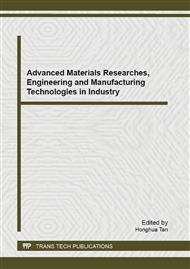p.495
p.501
p.508
p.513
p.520
p.525
p.532
p.538
p.542
Preparation and Characterization of Nickel-Based Anode-Supported SDC Half Cell by Tape Casting, Laminating and Co-Sintering
Abstract:
NiO/YSZ (6:4 wt.%) and NiO/SDC (6:4 wt.%) anodes, NiO/YSZ (SDC) anode-supported SDC electrolyte half cell were fabricated by tape casting, laminating and co-sintering technique. The laminating temperature was chosen to be 85¡æ that was above the glass transition temperature of PVA binder. Laminating pressure of 30-70 MPa was tried and it was found that 50 MPa was the best. Some unreacted CeO2 was decomposed between 1365-1393¡æ and Sm2NiO4 compound was formed in NiO-based complexes at about 1445-1448¡æ. The sintering temperature of 1400 ¡æ was selected. The flexural strength of NiO/SDC anode (with an open porosity of 22.7%) and NiO/YSZ anode (with an open porosity of 21.2%) was 68.8 and 165.6 MPa, respectively. The flexural strength of as-fabricated NiO/YSZ anode achieved the requirement of the mechanical property for anode-supported SOFCs. SDC electrolyte with dense, crackfree and uniform structure was successfully adhered to the porous and homogeneous NiO/YSZ anode.
Info:
Periodical:
Pages:
520-524
Citation:
Online since:
September 2013
Authors:
Keywords:
Price:
Сopyright:
© 2013 Trans Tech Publications Ltd. All Rights Reserved
Share:
Citation:


